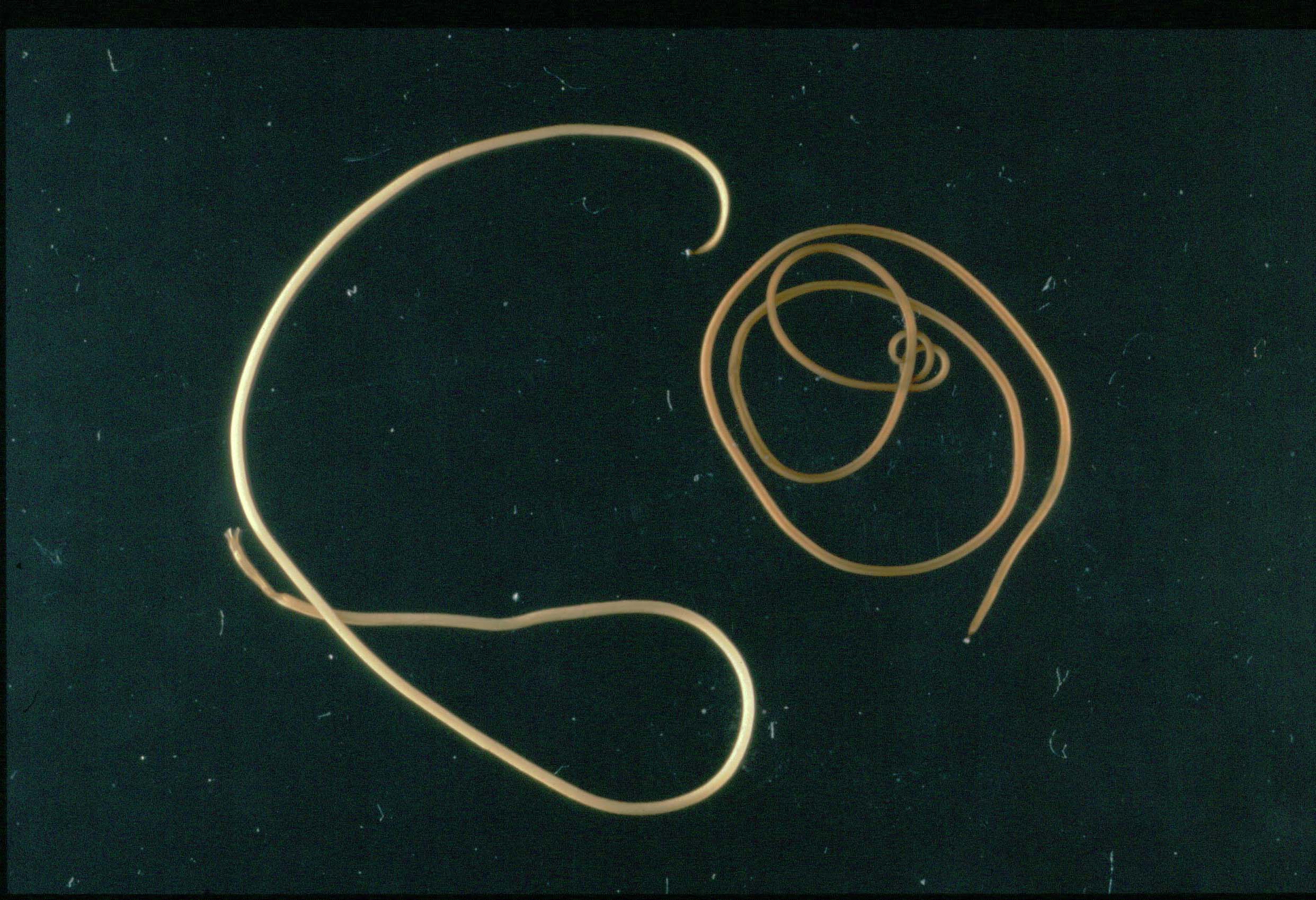Gordioidea on:
[Wikipedia]
[Google]
[Amazon]
Gordioidea is an
 * '' Chordodes'' Creplin, 1847
* '' Dacochordodes'' Capuse, 1965
* '' Euchordodes'' Heinze, 1937
* ''
* '' Chordodes'' Creplin, 1847
* '' Dacochordodes'' Capuse, 1965
* '' Euchordodes'' Heinze, 1937
* '' * '' Paragordius'' Camerano, 1897
;''
* '' Paragordius'' Camerano, 1897
;''
order
Order, ORDER or Orders may refer to:
* A socio-political or established or existing order, e.g. World order, Ancien Regime, Pax Britannica
* Categorization, the process in which ideas and objects are recognized, differentiated, and understood
...
(sometimes placed at superfamily level) of parasitic horsehair worms. Its taxonomy remains uncertain, but appears to be contained in the monotypic class Gordioida and contains about 320 known species.
Biology
Gordioidean adults are free-living in freshwater or semi-terrestrial habitats and larvae parasitise insects, primarilyOrthoptera
Orthoptera () is an order of insects that comprises the grasshoppers, locusts, and crickets, including closely related insects, such as the bush crickets or katydids and wētā. The order is subdivided into two suborders: Caelifera – gras ...
ns. Unlike Nectonematoidea
''Nectonema'' is a genus of marine Nematomorpha, horsehair worms first described by Addison Emery Verrill, Addison E. Verrill in 1879. It is the only genus in the family Nectonematidae described by Henry Baldwin Ward, Henry B. Ward in 1892, in th ...
ns, which are marine, gordioideans lack lateral rows of seta
In biology, setae (; seta ; ) are any of a number of different bristle- or hair-like structures on living organisms.
Animal setae
Protostomes
Depending partly on their form and function, protostome setae may be called macrotrichia, chaetae, ...
e and have a single, ventral epidermal cord and their blastocoel
The blastocoel (), also spelled blastocoele and blastocele, and also called cleavage cavity, or segmentation cavity is a fluid-filled or yolk-filled cavity that forms in the blastula during very early embryonic development. At this stage in mammal ...
is filled with mesenchyme
Mesenchyme () is a type of loosely organized animal embryonic connective tissue of undifferentiated cells that give rise to most tissues, such as skin, blood, or bone. The interactions between mesenchyme and epithelium help to form nearly ever ...
in young worms but become open when older.Pechenik (2010) ''Biology of the Invertebrates'', p. 457.
Families and genera
TheIntegrated Taxonomic Information System
The Integrated Taxonomic Information System (ITIS) is an American partnership of federal agencies designed to provide consistent and reliable information on the taxonomy of biological species. ITIS was originally formed in 1996 as an interagenc ...
lists the following genera in two families:
Chordodidae
Chordodidae is a family of parasitic horsehair worms belonging to the order Gordioidea; its taxonomy is under review.
Genera
Two subfamilies are currently recognised; unless referenced otherwise, the Global Biodiversity Information Facility inc ...
Auth. May, 1919; selected genera:
;Subfamily Chordodinae Heinze, 1935
 * '' Chordodes'' Creplin, 1847
* '' Dacochordodes'' Capuse, 1965
* '' Euchordodes'' Heinze, 1937
* ''
* '' Chordodes'' Creplin, 1847
* '' Dacochordodes'' Capuse, 1965
* '' Euchordodes'' Heinze, 1937
* ''Neochordodes
''Neochordodes'' is a genus of worm
Worms are many different distantly related bilateria, bilateral animals that typically have a long cylindrical tube-like body, no limb (anatomy), limbs, and usually no eyes.
Worms vary in size from mic ...
'' Carvalho, 1942
* '' Pantachordodes'' Heinze, 1954
* '' Spinochordodes'' Kirjanova, 1950
;Subfamily Paragordiinae
 * '' Paragordius'' Camerano, 1897
;''
* '' Paragordius'' Camerano, 1897
;''incertae sedis
or is a term used for a taxonomy (biology), taxonomic group where its broader relationships are unknown or undefined. Alternatively, such groups are frequently referred to as "enigmatic taxa". In the system of open nomenclature, uncertainty ...
''
* ''Gordionus
''Gordionus'' is a genus of Nematomorpha belonging to the family Chordodidae
Chordodidae is a family of parasitic horsehair worms belonging to the order Gordioidea; its taxonomy is under review.
Genera
Two subfamilies are currently recognise ...
'' Müller, 1927
* ''Parachordodes
''Parachordodes'' is a genus of worms belonging to the family Chordodidae.
The species of this genus are found in Europe and East Asia.
Several cases of human infections have been reported in South Korea, Japan
Japan is an island count ...
'' Camerano, 1897
* ''Paragordionus
''Paragordionus'' is a genus of worms belonging to the family Chordodidae
Chordodidae is a family of parasitic horsehair worms belonging to the order Gordioidea; its taxonomy is under review.
Genera
Two subfamilies are currently recognised; ...
'' Heinze, 1935
* ''Semigordionus
''Semigordionus'' is a genus of worms belonging to the family Chordodidae
Chordodidae is a family of parasitic horsehair worms belonging to the order Gordioidea; its taxonomy is under review.
Genera
Two subfamilies are currently recognised; ...
'' Heinze, 1952
Gordiidae
''Gordiidae'' is a family of parasitic horsehair worms belonging to the order Gordioidea.
Description
To date only two genera have been identified in the Gordiidae. These horsehair worms are characterized by a post-cloacal crescent located at t ...
Auth. May, 1919
* ''Acutogordius
''Acutogordius'' is a genus of worms belonging to the family Gordiidae.
The species of this genus are found in Northern America, Malesia
Malesia is a biogeographical region straddling the Equator and the boundaries of the Indomalayan and ...
'' Heinze, 1952
* '' Gordius'' Linnaeus, 1758
References
External links
* {{taxonbar, from=Q3819952 Nematomorpha Ecdysozoa orders Parasitic protostomes